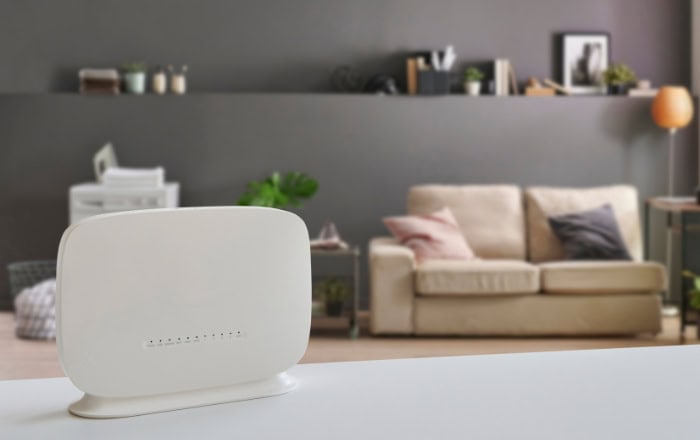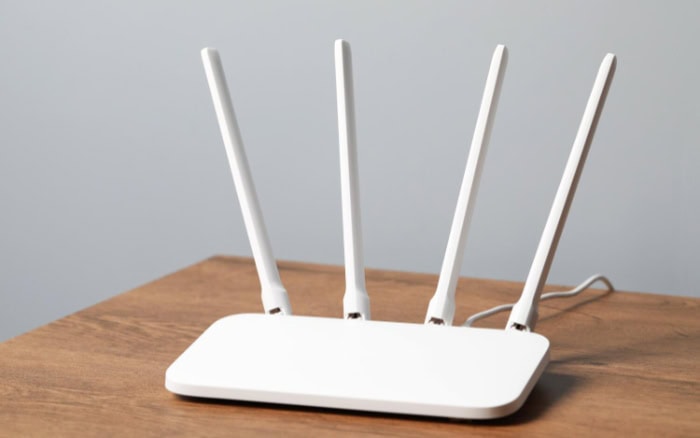Should I Turn On IPv6? Impact on Your Network

The internet's rapid growth has pushed older technologies like IPv4 to their limits, leading to the development of IPv6 as a modern solution. With its vast address space and streamlined design, IPv6 offers exciting possibilities for smoother connections, faster communication, and a more secure online experience.
However, making the shift isn’t always straightforward. Between compatibility concerns, security considerations, and the technical intricacies of implementation, deciding whether to enable IPv6 can feel like a significant choice.
Benefits of Enabling IPv6
IPv6 is more than a simple upgrade from its predecessor, IPv4. It was created to address the limitations of the older protocol and to prepare networks for the future of global connectivity.
Enabling IPv6 brings a range of advantages, from solving address space shortages to offering enhanced performance and security. These benefits highlight why it’s increasingly relevant for modern networks, especially as the demand for seamless communication between devices continues to grow.
Expanded Address Space
One of the most significant advantages of IPv6 is its nearly limitless address space, capable of supporting an almost infinite number of devices. Unlike IPv4, which is heavily reliant on Network Address Translation (NAT) to conserve IP addresses, IPv6 eliminates the need for this workaround.
NAT, while functional, often creates bottlenecks and complicates direct device-to-device communication. By removing this dependency, IPv6 allows devices to communicate directly and more efficiently across the network.
This vast address space has also opened the door for large-scale scalability, particularly in environments where a growing number of devices need unique IP addresses. Smart homes, IoT ecosystems, and enterprise networks all benefit from this capability, as it ensures seamless connectivity without the limitations imposed by IPv4’s finite pool of addresses.
Improved Performance
IPv6 is designed to enhance performance across various types of networks. One way it achieves this is by reducing the latency associated with peer-to-peer applications.
Without the overhead of NAT, data packets sent between devices can take more direct routes, which often leads to faster communication and improved responsiveness. This boost is particularly noticeable in applications like video conferencing, online gaming, and file sharing, where real-time interaction is critical.
IPv6’s streamlined packet structure also contributes to performance improvements. The protocol removes unnecessary fields and simplifies header processing, leading to more efficient data transmission for routers and devices.
This optimization not only reduces network congestion but also improves the consistency of connectivity for users.
Enhanced Security
Security has always been a critical concern in networking, and IPv6 addresses several weaknesses that exist in the IPv4 ecosystem. One notable improvement lies in IPv6’s built-in support for IPsec, a protocol suite designed to encrypt and authenticate IP traffic.
While IPsec can also be implemented in IPv4, it is optional and often adds complexity to configurations. IPv6 integrates this feature natively, making it easier to establish secure connections and protect sensitive data.
The elimination of NAT also improves security by reducing potential attack surfaces. NAT can obscure device identities but often complicates security measures, leaving networks vulnerable to certain types of attacks.
With IPv6, each device has a unique address, enabling more precise management of security policies and firewall configurations. This structure not only simplifies defense mechanisms but also minimizes reliance on outdated workarounds, creating a cleaner and more robust security framework.
Simplified Network Management
Managing networks with IPv4 often requires a series of manual configurations, particularly for reserving addresses or deploying DHCP services. IPv6 simplifies these tasks significantly through its Stateless Address Autoconfiguration (SLAAC) feature.
This functionality allows devices to generate their own IP addresses automatically, removing the need for extensive manual setup or even dependency on external DHCP servers in certain cases.
Network administrators also benefit from IPv6’s hierarchical addressing model, which makes it easier to organize and route traffic within large networks. By streamlining these processes, IPv6 not only reduces the potential for human error but also saves time and resources when managing infrastructure.
These improvements highlight the protocol’s ability to simplify complex tasks while offering a more efficient approach to network maintenance.
Potential Challenges and Risks

As promising as IPv6 can be, its implementation is not without challenges. Transitioning to a new protocol involves addressing compatibility issues, security concerns, performance variability, and a learning curve for network management.
These obstacles can impact the adoption process, especially for networks reliant on legacy systems or those requiring secure and stable connections.
Compatibility Issues
One of the most significant challenges with IPv6 adoption is the lack of support in legacy devices and software. Many older systems were designed solely with IPv4 in mind and lack the necessary updates or hardware capabilities to function with IPv6.
This lack of compatibility can cause disruptions in connectivity, requiring replacement or upgrades to ensure all devices and applications can operate seamlessly.
During the transition phase, dual-stack configurations are often used to allow IPv4 and IPv6 to coexist. While dual-stack ensures broader compatibility, it introduces complexities in network management.
Administrators must configure and maintain two parallel protocols, which can lead to higher resource demands and an increased risk of configuration errors. Coordination between the two systems requires careful planning to avoid connectivity issues and to ensure both protocols work harmoniously.
Security Concerns
Although IPv6 was designed with security in mind, new vulnerabilities have emerged as networks begin adopting the protocol. For example, the neighbor discovery process, used by IPv6 devices to locate others on the same network, can be exploited through spoofing attacks if proper safeguards are not in place.
These types of vulnerabilities highlight the need for robust monitoring and mitigation strategies during and after deployment.
Misconfigured firewalls are another prominent concern during the transition to IPv6. Many firewalls, particularly older models, are optimized for IPv4 traffic and may not properly handle IPv6 packets.
This oversight can inadvertently expose parts of the network to potential threats. Ensuring firewalls are configured to filter unnecessary IPv6 traffic is vital to maintaining a secure environment.
Performance Drawbacks
Despite IPv6 has the potential to improve network performance, certain scenarios can lead to drawbacks, particularly in the early stages of adoption. Connectivity and latency may vary depending on your internet service provider (ISP).
Not all ISPs have fully optimized their networks to handle IPv6 traffic as efficiently as they manage IPv4, which can result in packet loss or added delays in certain regions.
Tunneling protocols, such as 6to4 or Teredo, are sometimes needed to allow IPv6 traffic to traverse IPv4 infrastructures when direct IPv6 connectivity is unavailable. These tunneling methods introduce additional overhead, which can degrade network performance.
While tunneling is a useful temporary solution, it is not ideal for long-term use, and networks should aim to establish native IPv6 support as soon as possible.
How to Decide If IPv6 Is Right for You

Determining whether to enable IPv6 depends on your current infrastructure, technological requirements, and future plans. While IPv6 offers numerous benefits, such as improved scalability and performance, transitioning to the protocol requires evaluating readiness and practical needs.
Assessing ISP and Infrastructure Readiness
Before enabling IPv6, checking your ISP’s level of support is an essential first step. Not all providers fully support IPv6, and some offer only limited functionality, which could affect your ability to use the protocol effectively.
Tools like test-ipv6.com can help you determine your connection’s compatibility and pinpoint any limitations in IPv6 accessibility. Additionally, reach out to your ISP to confirm their network’s readiness and inquire about any native IPv6 support they provide.
Your hardware and firmware also play a significant role in successful IPv6 adoption. Modern routers and networking equipment typically include IPv6 support, but older devices may not.
Verifying that your router’s firmware is up-to-date and capable of handling IPv6 is crucial, as outdated firmware may lack the necessary features or introduce performance issues. Other devices on your network, such as smart home systems or legacy equipment, should also be checked to ensure full compatibility.
Evaluating Use Cases
The need for IPv6 often depends on how you use your network. Businesses and individuals hosting servers, developing modern web applications, or deploying IoT systems will find IPv6 increasingly relevant.
With its expansive address space, the protocol is particularly advantageous for environments requiring many unique device connections, such as large-scale enterprises or smart home networks.
For smaller households or users engaging in casual browsing, the immediate need for IPv6 is less urgent. IPv4 can still handle most everyday internet usage scenarios, especially in setups that do not rely heavily on device-to-device communication or high scalability.
However, even for light users, preparing for IPv6 now can minimize potential disruptions as the global internet infrastructure continues transitioning toward this protocol.
Cost-Benefit Analysis
Switching to IPv6 involves weighing the short-term effort against its long-term inevitability. While configuring your network for IPv6 may require time, resources, and possibly new hardware, the benefits it provides — such as eliminating address shortages and streamlining network management — make it a worthwhile investment for the future.
IPv4’s address pool is practically exhausted, and workarounds like NAT create increasing complexities. As more online services prioritize native IPv6 connectivity, access to certain resources may become limited for IPv4-only networks.
Taking proactive steps now can help ensure seamless connections and avoid complications in the years to come.
That said, transitioning should ideally be gradual and tailored to your specific needs. If IPv4 is currently meeting your requirements, you may opt to enable IPv6 alongside it in a dual-stack setup and allow the transition to unfold as your network’s demands grow.
Balancing immediate needs with future-proofing efforts can help make the switch more manageable.
Steps to Enable IPv6 Safely

Activating IPv6 on your network can unlock numerous benefits, but doing so requires careful attention to configuration and security. A smooth transition involves ensuring the network is set up correctly, maintaining fallback options for IPv4, and implementing robust security measures to protect against potential risks.
Configuration Best Practices
Proper configuration is essential when enabling IPv6 to ensure it functions efficiently and securely. Setting up IPv6 involves configuring your router, updating DNS settings, and making adjustments on individual devices.
Step 1: Configuring Your Router
- Access Your Router’s Settings
- Open a web browser and enter your router’s IP address (commonly 192.168.1.1 or 192.168.0.1). Log in using the router’s admin username and password.
- Enable IPv6
- Navigate to the IPv6 settings, which are usually found in the advanced or network configuration sections. Activate IPv6 and choose the appropriate setup mode:
- SLAAC and DHCPv6: Enable Stateless Address Autoconfiguration (SLAAC) for automatic address assignment, and optionally enable DHCPv6 for providing DNS and other configuration data to devices.
- Native IPv6: Use this option if your ISP provides direct IPv6 support.
- Navigate to the IPv6 settings, which are usually found in the advanced or network configuration sections. Activate IPv6 and choose the appropriate setup mode:
- Disable Unnecessary Features
- Turn off unused tunneling protocols such as 6to4, Teredo, or ISATAP if they are not required, as these can introduce security risks and performance issues.
- Save and Restart
- Save your settings and reboot the router to apply the changes.
Step 2: Configuring IPv6 on Devices
After setting up your router, ensure all devices can communicate over IPv6. Many devices support IPv6 automatically, but you may need to verify or manually adjust settings.
- Windows
- Go to Control Panel or Settings, then navigate to Network and Sharing Center. Select your active connection and click Properties.
- Ensure the checkbox for Internet Protocol Version 6 (TCP/IPv6) is enabled.
- macOS
- Open System Preferences, go to Network, and select your active connection. Under the TCP/IP tab, confirm that IPv6 is set to Automatically or configure it manually for static addresses.
- Linux
- Edit the relevant network configuration file:
- For Debian-based systems: /etc/network/interfaces.
- For Red Hat-based systems: /etc/sysconfig/network-scripts.
- Use commands like ip -6 addr or ifconfig to verify IPv6 connectivity.
- Edit the relevant network configuration file:
Step 3: DNS Configuration
Ensure DNS settings support IPv6 by using public DNS services or configuring ISP-provided IPv6 DNS servers. Popular public DNS options include:
- Google Public DNS: 2001:4860:4860::8888 and 2001:4860:4860::8844.
- Cloudflare DNS: 2606:4700:4700::1111 and 2606:4700:4700::1001.
Update these settings on the router or individual devices as needed to ensure compatibility with IPv6 traffic.
Fallback Strategies
While enabling IPv6, maintaining IPv4 functionality during the transition is critical to avoid connectivity disruptions. A dual-stack setup, where IPv4 and IPv6 operate in parallel, is an effective approach.
- Keep IPv4 Enabled
- Ensure your router is configured to support both IPv4 and IPv6. This allows devices that rely solely on IPv4 to remain functional while enabling IPv6 capabilities for the rest of the network.
- Test IPv6 Compatibility
- Use online tools like test-ipv6.com to verify that your IPv6 configuration is functioning correctly without disrupting IPv4 services.
- Monitor Network Performance
- Deploy network monitoring tools to track traffic, address assignment, and connection quality. Tools such as Wireshark or built-in router logs can help identify and resolve potential IPv6-related issues during the dual-stack phase.
- Rollback Plan
- In case of serious issues, ensure you have a rollback plan. Document IPv4 settings and configurations so you can temporarily disable IPv6 if necessary without losing network functionality.
Security Hardening
Securing your network is critical during and after enabling IPv6. While IPv6 introduces new features, it also brings unique vulnerabilities that require attention.
- Enable IPv6 Firewall
- Ensure your router’s firewall is configured to handle IPv6 traffic. Some firewalls default to IPv4 rules only, so you may need to manually define policies to secure IPv6 traffic.
- Filter Incoming Traffic
- Block unnecessary inbound IPv6 traffic, such as ICMPv6 packets unless required for proper network operation. Use firewall rules to limit access to sensitive devices or services.
- Close Unused Ports
- Disable any ports that are not needed for your network’s functionality. Open only what is absolutely necessary to minimize exposure to attacks.
- Enable Traffic Logging and Monitoring
- Configure your router to log IPv6 traffic and review the logs regularly. Monitoring helps you detect unusual activity, such as unauthorized access attempts or malicious traffic patterns.
- Keep Firmware and Software Updated
- Regularly update your router’s firmware and the operating systems on connected devices. Updates often include fixes for known vulnerabilities specific to IPv6.
Conclusion
IPv6 represents a significant step forward in addressing the challenges posed by IPv4's limitations, offering an expanded address space, improved performance, enhanced security, and simpler network management. These advantages make it a promising solution for modern networks, particularly as the number of connected devices continues to grow.
However, the transition is not without its challenges. Compatibility issues with legacy systems, new security vulnerabilities, potential performance drawbacks, and the technical learning curve all highlight the importance of a well-planned approach to enablement.
Adopting IPv6 is not a one-size-fits-all decision. The necessity and urgency of enabling it depend on your specific technical requirements, infrastructure readiness, and goals.
Businesses managing IoT ecosystems, hosting services, or planning for long-term scalability will find IPv6 particularly useful. Meanwhile, casual users with simpler networks can often afford to take a more gradual approach, enabling IPv6 while maintaining IPv4 functionality in the short term.
For those prepared to make the switch, gradual and monitored adoption is highly recommended. Begin by assessing your ISP’s support and ensuring your devices are compatible.
Focus on configuring your network securely while maintaining fallback options for IPv4 and monitoring for any issues during implementation. With careful planning, IPv6 can be seamlessly integrated into your network, future-proofing it for the evolving demands of the digital era.


